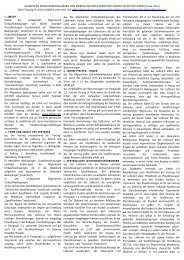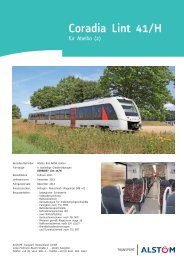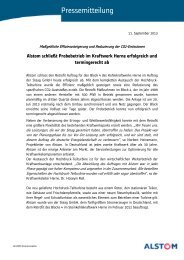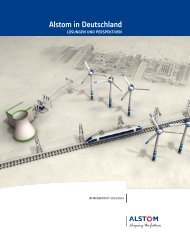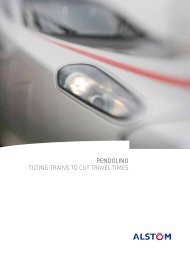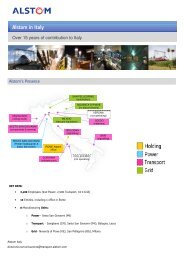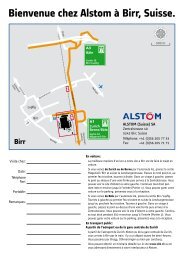MOROCCO IS ACCELERATING! feature - Alstom
MOROCCO IS ACCELERATING! feature - Alstom
MOROCCO IS ACCELERATING! feature - Alstom
Create successful ePaper yourself
Turn your PDF publications into a flip-book with our unique Google optimized e-Paper software.
54<br />
culture<br />
Poul Thestrup, Director of<br />
the Danish Railway Museum.<br />
Snowplough.<br />
Why was the Danish Railway Museum<br />
built in Odense and not in Copenhagen?<br />
Not because the capital of Fionie is also<br />
the country of Hans Christian Andersen,<br />
but because it has a huge depot, built<br />
in the 1950s and equipped with a swing<br />
bridge. “In those days,” recalls Poul Thestrup,<br />
the museum’s director, “the idea of building<br />
a bridge over the Great Belt was already<br />
being discussed and the rail company<br />
was looking for a maintenance site for<br />
its steam locomotives, on the other side<br />
of the channel. But by the time the Odense<br />
depot was built, the idea of a bridge<br />
had been buried and steam had given<br />
way to diesel-electric… The depot was<br />
therefore more or less empty.”<br />
Indeed, from 1900 onwards, private collectors<br />
had begun to collect what could constitute<br />
the basis of a railway museum, but it was<br />
not until 1934 that a small museum actually<br />
opened on… the fi fth fl oor of the railway<br />
building in Copenhagen! It goes without<br />
saying that the items exhibited were limited<br />
to models, posters and uniforms,<br />
the locomotives and cars being dispersed<br />
between different depots, including the one<br />
at Odense. 1975 saw the birth of a museum<br />
worthy of this term in Andersen’s<br />
birthplace and, over the years, the collections<br />
gradually fi lled the depot’s 5,000 m 2<br />
to eventually occupy the entire space.<br />
Another identifying <strong>feature</strong> of the Danish<br />
Railway Museum is the scope of its activity,<br />
highly unusual for a museum. A subsidiary<br />
of the DSB, the public railway company,<br />
the museum offers a broad palette of services<br />
that range from making old trains available<br />
for hire – usually reserved for corporate<br />
entertainment or events involving the royal<br />
family – to clearing snow on tracks with huge<br />
snowploughs. One of these, made of metal<br />
plated wood painted grey and red, stands<br />
in the museum’s main hall. Lastly, but<br />
no doubt most signifi cant of all, the museum<br />
is distinguished by its noble ‘Protektor’:<br />
His Royal Highness Prince Frederik.<br />
Rail, the rise and fall<br />
The history of Danish rail goes back<br />
to 1847, the date of the opening of the fi rst<br />
line connecting Copenhagen to Roskilde,<br />
a distance of 30 km. An English engineer<br />
called William Radford supervised the works<br />
and the locomotives were imported<br />
from Sharp Brothers & Co., in Manchester.<br />
In 1844, the fi rst line was built under<br />
the Danish monarchy, between Altona,<br />
near Hamburg, and Kiel, on the Baltic Sea.<br />
King Christian VIII inaugurated the line<br />
from his position as Duke of Holstein,<br />
although the region was in fact part<br />
of the German Confederation.<br />
The construction of new lines spread<br />
throughout the kingdom and reached<br />
5,300 km in 1929. This extremely dense<br />
network connected even small<br />
country towns to each other.<br />
“The arrival of the car,<br />
in the 1930s,<br />
marks the beginning<br />
of the decline of rail<br />
in Denmark,”<br />
explains Poul Thestrup.<br />
“Each year, more and more secondary<br />
lines closed, returning the size of<br />
the Danish network to what it had been<br />
at the turn of the previous century.”



